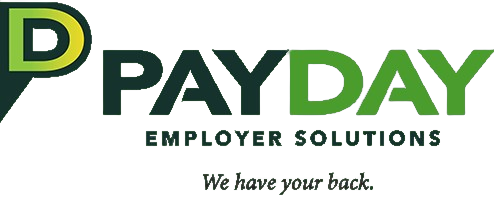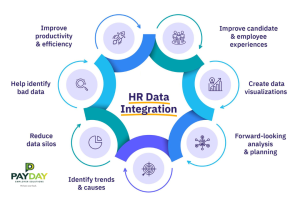In the workplace, safety isn’t just a tick-box exercise. It’s the secret sauce that enhances productivity, compliance, and trust in the workplace. Want to keep your employees happier, prevent nasty accidents, and save yourself from unexpected costs? It all starts with understanding the link between safety and worker’s compensation. Let’s unpack how you can keep your people safe, your business protected, and still comply with the rules.
Why Workplace Safety Matters
Your team isn’t just showing up to do a job; they’re relying on you to create an environment where they can work without fear of injury. When workplace safety is prioritized, it doesn’t just reduce accidents—it encourages trust and well-being among employees, which naturally improves morale and retention. Here’s why you need to care about this:
- Preventing Injuries: Simple stuff—risk assessments and solid training can minimize workplace injuries. Think of it like putting brakes on a runaway car. Safety measures stop accidents before they happen.
- Boosting Morale: Safe employees are happy employees. When your team knows you’ve got their back, they can focus on their job, not worrying about getting hurt.
- Regulation Compliance: Ever seen the fines from non-compliance? Trust me, you don’t want to! Keeping up with regulations like OSHA means less legal trouble and a trustworthy reputation.
- Cost Savings: Accidents cost money—medical bills, downtime, repairs. But a safe environment saves you cash and keeps the business moving. A no-brainer, really.

How to Enhance Workplace Safety
Let’s get practical. One of the most effective ways to enhance workplace safety is by leveraging digital tools to streamline your onboarding and training processes. Incorporating the right technology, like those highlighted in onboarding strategies, ensures your safety protocols are followed and understood by all employees, reducing risks significantly. Here are 5 steps that will set you on the right path:
- Regular Safety Audits and Risk Assessments: Find the hazards before they find you. It’s like checking under the hood before a long drive—you catch the issues early.
- Ongoing Safety Training: Think training is a one-time thing? Wrong. Keep your team sharp with regular drills and updates. Tailor it to your industry—whether it’s factory machinery or office ergonomics.
- Foster a ‘Safety-First’ Culture: Safety isn’t the job of a few managers; it’s a mindset for the entire company. Make it easy for staff to report hazards—no fear of speaking up.
- Use the Right PPE (Personal Protective Equipment): Safety gear isn’t optional. Whether it’s hard hats on a building site or gloves in a lab, PPE keeps your people protected.
- Develop and Test Emergency Plans: A calm, prepared team in an emergency is worth its weight in gold. Fire drills, evacuation plans, you name it. Practice makes perfect.

Understanding Worker’s Compensation
Now, onto worker’s compensation—your safety net when things go wrong. Worker’s compensation is the system that ensures employees get the care they need if they’re injured on the job. It’s a big deal for both the worker and the company. Here’s the lowdown:
- What is Worker’s Compensation? It’s a financial lifeline. Workers who get hurt are covered for medical costs, rehab, and lost wages. That means they don’t have to worry about going broke while they recover.
- Legal Compliance: Most places require businesses to carry worker’s compensation insurance. If you don’t, expect fines, lawsuits, and a hit to your reputation. Knowledge is power here—know the laws in your area.
- Benefits to Employers and Employees: Offering solid worker’s comp shows your team you care. It’s a way to build trust, avoid messy lawsuits, and keep productivity

How Understanding Worker’s Compensation Benefits Employers
You know those horror stories of endless downtime when someone’s injured? That’s what you’re avoiding by understanding worker’s comp. Here’s why it’s good for you as the employer:
- Return-to-Work Programs: Many worker’s compensation plans include these—letting injured staff come back on light duty. This cuts downtime and helps them recover while staying productive.
- Employee Satisfaction: When workers know they’re covered, they relax. They’re more loyal, less likely to leave, and will put in their best effort.
- Legal Protection: Knowing the ins and outs of worker’s compensation shields you from expensive legal battles. Stay compliant, and stay out of court.
Steps to Enhance Understanding of Worker’s Compensation
To keep on top of worker’s comp, you need to know the rules of the game. Here’s how to do that:
- Stay Updated on Local Laws: Worker’s comp laws change all the time. Keep yourself updated to avoid nasty surprises.
- Work with Insurance and HR Experts: Don’t guess—work with people who know the drill. They’ll help you find the right coverage and manage claims without a hitch.
- Create Clear Policies: Your team should know what happens if someone gets hurt. Clear policies speed up the process and avoid confusion.
- Implement Return-to-Work Strategies: Help your employees get back on their feet—literally. Bring them back on light duty to keep things moving.
The Role of Compliance in Workplace Safety and Worker’s Compensation
Compliance with safety regulations not only protects employees but also shields the business from legal repercussions. Staying updated on critical deadlines, such as those discussed in our comprehensive payroll services, and ensuring all policies are in place can save you from unnecessary fines and shutdowns. Here’s why ignoring it simply isn’t an option:
- Avoiding Legal Nightmares: Think of compliance like a safety net. Without it, one misstep could lead to lawsuits, heavy fines, or even business closure. Regulatory bodies like OSHA don’t play around, so staying compliant isn’t just smart—it’s essential for survival.
- Building a Culture of Accountability: Compliance does more than just keep the lawyers off your back. It creates a workplace where everyone takes responsibility. When safety guidelines and compensation rules are clear, both employers and employees know what’s expected—and trust is built from the ground up.
- Reducing Risks: Compliance isn’t just a shield from penalties—it actively reduces workplace hazards. Regular safety checks and audits stop small issues from snowballing into serious accidents, keeping everyone safer.

Why Understanding Worker’s Compensation is Critical for Productivity
Properly managing worker’s compensation claims is vital for maintaining productivity. When employees feel their well-being is prioritized, they are more likely to stay loyal and motivated, which in turn improves overall efficiency. This aligns well with broader strategies for boosting engagement and productivity. Here’s how worker’s compensation directly impacts your bottom line:
- Faster Claims, Faster Recovery: When you know the ins and outs of worker’s compensation, you can handle claims like a pro. Efficient processing means employees get medical help fast, minimizing downtime and getting them back to work sooner.
- Building Trust and Loyalty: Employees notice when their safety and welfare are prioritized. When they see you’ve got their back, loyalty grows. Happy, secure workers are less likely to leave, which reduces turnover and boosts morale.
- Preventing Long-Term Issues: Mismanaged claims can lead to long-term health problems or disputes that drag on for years. But with proper handling, you can avoid these pitfalls, ensuring your team stays healthy and focused on their work, not legal battles.

Prioritize Safety and Compensation for a Productive Workplace
When safety and worker’s compensation go hand in hand, you create a workplace where employees feel secure, and your business thrives. It’s not just about compliance—it’s about building trust, saving money, and ensuring your team is at its best.
At Payday Employer Solutions, we specialize in helping businesses enhance their workplace safety and ensure compliance with worker’s compensation laws. Contact us today to learn how we can assist you in building a safer and more productive workplace.







